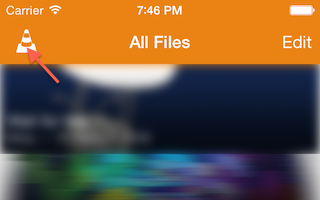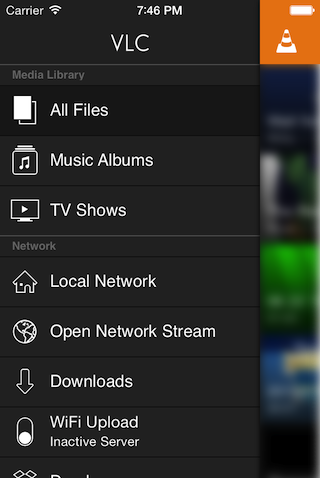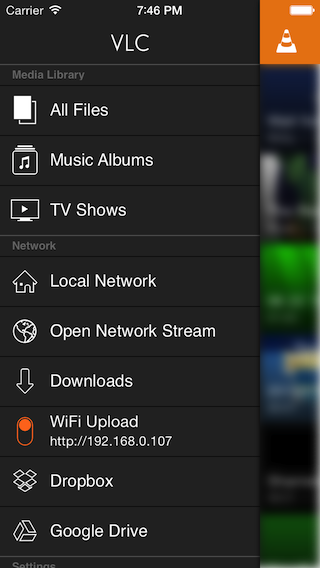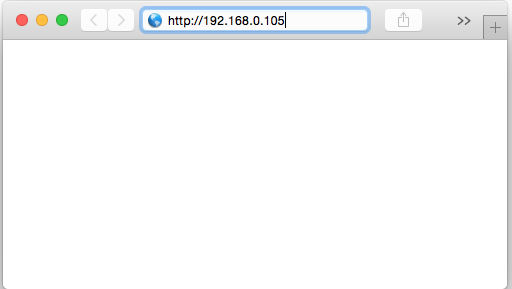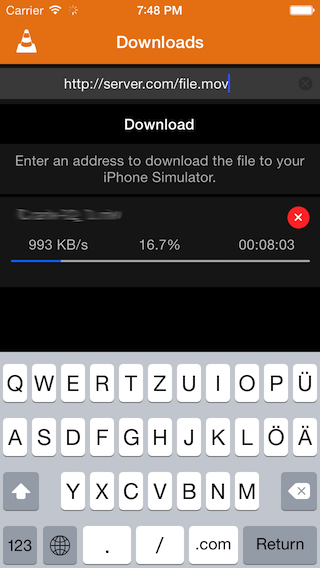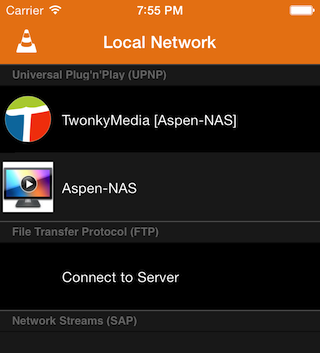Difference between revisions of "Documentation:IOS"
m (Protected "Documentation:IOS" ([edit=sysop] (indefinite) [move=sysop] (indefinite))) |
(add open network stream and local network) |
||
| Line 1: | Line 1: | ||
== Preliminary Note == | == Preliminary Note == | ||
| − | VLC for iOS is different from what you can do with VLC on desktops. In some regards, you can do more, in others, you can do less. VLC for iOS does only do media playback. Active streaming or file / stream to file conversations are not supported for usability and performance reasons. | + | VLC for iOS is different from what you can do with VLC on desktops. In some regards, you can do more, in others, you can do less. VLC for iOS does only do media playback. Active streaming or file / stream to file conversations are not supported for usability and performance reasons. This walk-through does only include screenshots of the iPhone interface for size reasons. However, all features are also available on iPad with virtually the same appearance. |
== Media Synchronization == | == Media Synchronization == | ||
| Line 40: | Line 40: | ||
== Network Integration == | == Network Integration == | ||
| + | In addition to the media synchronization options described above, VLC for iOS provides a variety of options to interact with networking sources. Additionally, third party websites and apps may include links to open streams directly in VLC for iOS. | ||
| + | |||
=== Open Network Stream === | === Open Network Stream === | ||
| + | Clicking on this item in the sidebar menu reveals a URL field to open a network streams. HTTP, FTP, MMS, MMSH, RTSP, UDP, and RTP streams are supported. Additionally, this view includes a list of your last 15 streams and an option to disable keeping the history. | ||
| + | |||
=== Local Network === | === Local Network === | ||
| + | Introduced in VLC for iOS 2.2, ''Local Network'' discovers and lists servers found on your local network. At present, this includes UPNP media servers and FTP servers announced via Bonjour / Rendezvous. Further options will be made available in future releases. | ||
| + | |||
| + | [[File:VLC for iOS Local Network discovery.png|framed|Local Network servers]] | ||
| + | |||
| + | Clicking on "Connect To Server" exposes the ability to connect to FTP servers not included in the list. | ||
== Playback == | == Playback == | ||
Revision as of 13:57, 21 August 2013
Contents
Preliminary Note
VLC for iOS is different from what you can do with VLC on desktops. In some regards, you can do more, in others, you can do less. VLC for iOS does only do media playback. Active streaming or file / stream to file conversations are not supported for usability and performance reasons. This walk-through does only include screenshots of the iPhone interface for size reasons. However, all features are also available on iPad with virtually the same appearance.
Media Synchronization
There are multiple ways to synchronize media files to VLC for iOS. Those may be extended in future releases. Streaming without saving files using the limited space available on iOS devices is also supported. See below.
iTunes File Sharing
Using iTunes, you can add and delete files to VLC for iOS. Apple provides excellent documentation for this.
WiFi Upload
If your iOS device and your Mac or PC is on the same local WiFi network, you can use WiFi Upload to add files to VLC for iOS' library.
Within VLC for iOS, click the cone button:
This will expose the sidebar menu. Locate the WiFi Upload menu item. Notice the empty circle indicating the server's off-state and the description "Inactive Server". Note that in earlier versions of VLC for iOS, you'll see a toggle button.
Click the item or switch the toggle. A network address will appear in the item:
Enter the network address to your web browser on your Mac or PC on the same local network:
VLC for iOS' WiFi Uploading page will appear. You can drag any file stored on your Mac or PC to this window for immediate upload to your iOS device. Additionally, you can press the "Upload files" button in the top-right to expose a file selector panel in case your files are not reachable by drag and drop. VLC for iOS' WiFi Uploader supports multiple uploads at the same time and will indicate through a progress when upload is complete.
Because it's VLC after all, you can start playback of most files on your iOS device as soon as they appear so you don't need to wait until the upload is finished.
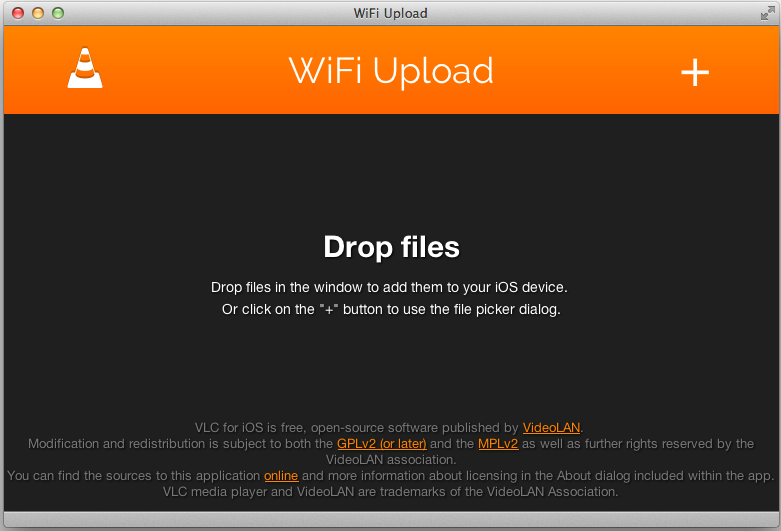
Dropbox
VLC for iOS natively supports Dropbox. Open the menu as described above, choose Dropbox. For the first time, a login button will appear. When clicking, you'll be redirected to the Dropbox app for login or to the web if you don't have Dropbox installed. VLC for iOS will receive read and write access to your entire Dropbox after login. However, VLC for iOS does not support any write actions (i.e. you cannot upload files from VLC for iOS to your Dropbox either), so don't worry about your file integrity.
Downloads from the Web
The sidebar menu also includes an item called Downloads (or in earlier versions Download from Web Server). When selected, it will show the download queue and progress of downloads triggered through the network integration (see below) and exposes a field to enter a URL to directly download media from somewhere. Both HTTP and FTP are supported (earlier versions support HTTP only)
Network Integration
In addition to the media synchronization options described above, VLC for iOS provides a variety of options to interact with networking sources. Additionally, third party websites and apps may include links to open streams directly in VLC for iOS.
Open Network Stream
Clicking on this item in the sidebar menu reveals a URL field to open a network streams. HTTP, FTP, MMS, MMSH, RTSP, UDP, and RTP streams are supported. Additionally, this view includes a list of your last 15 streams and an option to disable keeping the history.
Local Network
Introduced in VLC for iOS 2.2, Local Network discovers and lists servers found on your local network. At present, this includes UPNP media servers and FTP servers announced via Bonjour / Rendezvous. Further options will be made available in future releases.
Clicking on "Connect To Server" exposes the ability to connect to FTP servers not included in the list.
